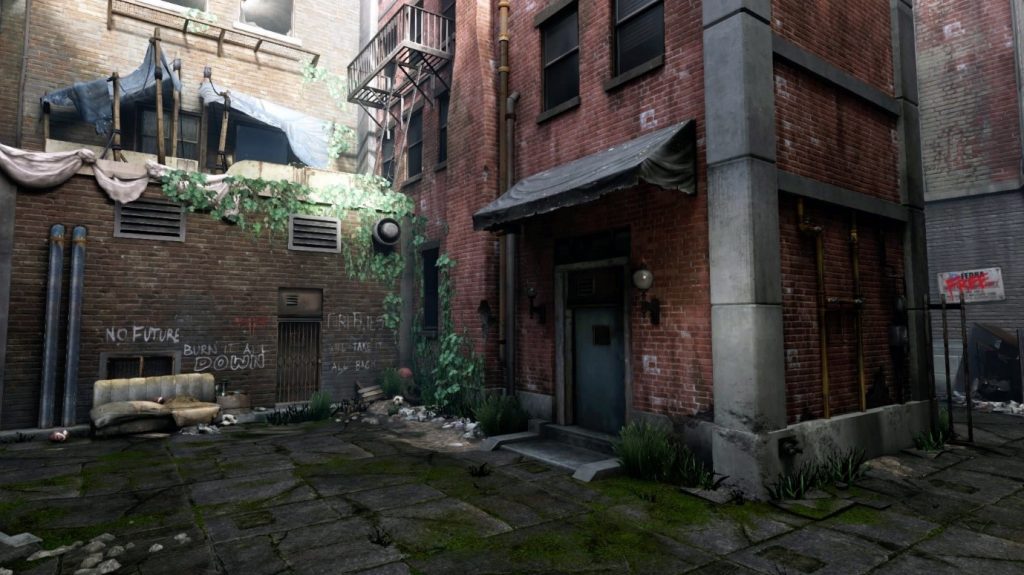(Warning: This article is about the Naughty Dog The Last of Us, it contains narrative and ending spoilers)
The Last of Us shows human society severely decimated by the Cordyceps infection, a fungal pathogen that attacks insects but manages to jump onto human hosts. Metaphorical in nature the infected represent “the dying remnants of a past society,” (Farca and Ladeveze 2016, p.8) The disease in question is fungal and spread by infectious spores resulting in the minds and appearances of human beings being taken over: their identities completely destroyed. It’s not only the people who have become ruined, the game features ruins of real places presenting familiar virtual architecture and landscapes we can explore. We can apply archaeological thinking to these artifacts and ruined landscapes to examine collective trauma and brutality, and its larger sociopolitical significance.

The Last of Us focuses on the character of Joel, a pessimistic ruined man tasked with escorting a rebellious 14-year-old girl named Ellie to the militia group Fireflies, currently fighting against oppression in numerous Quarantine Zones. Ellie is born in a time when the fungal pandemic had spread throughout America. Her experiences are shaped by trauma and brutality from an early age, focusing on only survival. Later in the game it becomes evident that Ellie is immune to the fungal infection, and the Fireflies main objective is to extract part of her brain in hopes of making a vaccine. Throughout Joel and Ellie’s journey they pass highways and railways that lead to nowhere; enormous dams rusted shut; schools, hospitals without students or patients. Ruins physically represent the degradation of the former civilization’s values; however the devastation brought on by the outbreak is countered by the beauty and resurgence of nature. Trees and plants start reclaiming urban spaces resulting in a surprisingly green post-apocalyptic picture.
The landscapes of The Last of Us are not only an aesthetic element providing context and a pleasant backdrop, but a more intrinsic part of the design — reflecting and amplifying events and moods. Ruins are designed to represent our failure as a species to cooperate and unify, where cities thrived in The Last of Us, they are now home to nomadic gangs and cannibals out for themselves. Throughout the bleak landscapes we see weeds growing through cracked pavements in run-down towns and cities, with garbage strewn across the floor and paint peeling off the walls of slowly eroding buildings. From a contemporary archaeological perspective, The Last of Us is an intimate exploration of the abandoned settlement and a reflection on the nature of ruins.
Civilization has fallen
We know from the archaeological record that other civilizations have risen, believed themselves to be invincible, and have fallen. Similarly, to ancient cultures where the material cultures tells a narrative of abandonment due to conflict, disease and/or ecological collapse. The Last of Us build on our fascination and fear of ruins by extrapolating ecological issues of our contemporary present into a future historical time we may inhabit. The environment and landscape in The Last of Us maintains the trait of widespread landscape reclamation by nature. We see this in ruins of today, where prolonged drought, exacerbated by ill-advised deforestation, forced Mayan populations to abandon their cities deep within the rainforests of Central America. Disease is often the culprit when it comes to abandonment of some medieval villages in the UK. The Black Death of 1348–49 may have played a significant part in the desertion of Wharram Percy, an abandoned medieval village located in Yorkshire, England. Anthropologists have documented that, between 1518 and 1550, almost ninety per cent of the native people of Honduras died of disease, abandoning settlements where smallpox was rampant as well as widespread violence and brutality against them by invading Spanish forces. A pattern repeatedly seen in many other places in the Americas. The material artifacts (an abandoned school bus, a treasured toy) presented in The Last of Us is testimony to an event (the outbreak) that became historical in the game’s timeline.
The post-apocalyptic plot comes alive through the artifacts and environments we encounter and explore as players. As Emma Fraser in her Awakening Ruins essay states “American cities including Boston and Pittsburgh offers a peculiar experience of encountering familiar objects, architecture, or landscapes in a thoroughly unfamiliar state”. But these objects, architecture and landscapes follow the central concepts of archaeological formation processes: discard, recycling and refuse.

Garbage as cultural artifacts
In The Last of Us garbage is everywhere! And the characters’ reaction to garbage is different based on their personal experiences. Joel sees the ruins and garbage from a very familiar experience, while Ellie sees it from extrinsic outlook being raised after the initial outbreak and during human’s fight for survival. This is illustrated by various conversations in which Ellie questions Joel about this past world. Ellie’s response to Joel’s explanation of an ice-cream truck, “Man, you lived in a strange time” is testimony of this unfamiliarity. We learn about the events of the outbreak through its backdrop and characters’ interactions. But we also view the world from both these perspectives, as a person not used to this hypothetical world the game presents, and also from a world that resembles our own. What existed before is still recognizable, but it is rustic and dusty, falling apart and nailed together again. The virtual settings in the game are littered with evidence of human’s past before the outbreak; children’s drawings untouched on cubicle walls in offices, toys in the back garden of people’s houses, family photos still displayed in wrecked living rooms.
The Last of Us allow the players room to imagine, to work out the puzzle themselves just as archaeologists would do. We learn about the circumstances and stories of the individuals through the material culture they have left behind. This is why The Last of Us ‘s concern with realism in depicting contemporary ruins and garbage pays off by helping the player traverse through the environment. Exploration of the space not only pays off in terms of a gameplay perspective such as by securing much needed supplies, but also engages the player to develop a better understanding of people’s reaction to the initial outbreak and later survival adding more details to the overall narrative. This is evident in parts of the game, such as the Pittsburgh sewer system segment, where we discover through journal entries, artifacts and the environment that a character named Ish established a safe-house community within its sprawling tunnels. At a later point in time, a door leading to the safe-house was left open by one of the group, which allowed a horde of infected to flood in. Ish, another survivor, and a few of the children managed to escape.
Conclusion
Apocalypse is a Greek word (ἀποκάλυψις) meaning “revelation”, an unveiling or unfolding of things not previously known. In Christian terms, the revelation denotes God’s will, his providence in relation to the end of the world and the final judgment. The revelation of The Last of Us in a narrative sense is similar to this, it’s Joel’s will to save Ellie’s life and condemn humanity that ultimately may end the current in-game world. But what revelation does the game environment teach us? Like people, cities are organisms influenced by an ongoing process of growth and decay, they reflect a society beliefs and cultures. The entirety of the landscape narratives and the basis of such widespread urban decay may reveal the true character of humanity or even ourselves.
Video games are part of the longstanding tradition of the arts, which have a long and varied history of gazing at ruins. However, video games force us to confront that intangible boundary where the past and present meet, where as players we can marvel at the skyscrapers as they crumble. These things do not only affect game-play, but they add to the atmosphere and depth of the space allowing players to survey the area for potential clues about its past and present. Just like material culture that tells a narrative of past people, The Last of Us focuses on the themes of political resistance and revolution, decolonization, ecological crises, migration, revealing the true character of humanity. The Last of Us speak to our contemporary anxieties about alienation, dehumanization, and a loss of faith in institutions, even more so in the current political Western climate, which is underpinned by isolation (Brexit) and xenophobia (The US-Mexico Border). The archaeological record of The Last of Us is carefully designed to include —ruins, waste, abandoned places, devastated landscapes—all these element showcase a unique perspective of its themes which go beyond anesthetization. The ghost of our era echoes through the artifacts found in the game, but they have been recycled, reused and discarded. Just like artifacts found in the museum, the cultural artifacts we stumble across have a story attached, one that ties it to an individual or event that bears significance and meaning. The artifacts found in The Last of Us are more meaningful than even artifacts found in the museum as they are geographically close to us and exist within our shared cultural memory. However, the state we find them in make them alien to us. The degree to which those objects are reverenced, conserved, protected, would be unjustified in our world, such as Henry’s toy robot which Ellie’s keeps with her despite him later falling to the infection. Living in the post-apocalyptic world, people would cling to objects of the past, which are burdened by memory and coded with unescapable references to and before the outbreak. Within this context, familiar objects become unfamiliar and otherworldly. Like the ice-cream truck that not only informs us of how characters react when faced with the past, and how we react to their understandings of our world. Maybe the ‘revelation’ that The Last of Us offers us as a player is how we tie our own identities, views and experiences onto the inanimate, immateriality of a world that neither belongs to the past or the present.
Franki Webb is a guest contributor to Interactive Pasts, she can be found on Twitter @frankiwebb
